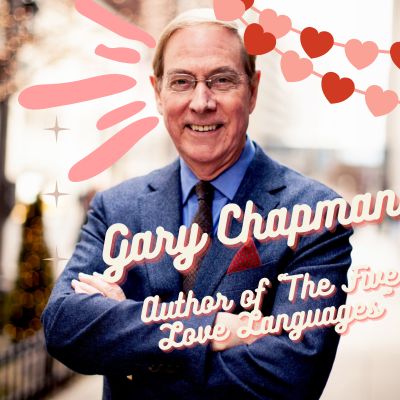
The Five Love Languages were first introduced about 30 years ago, in a novel written Gary Chapman. Chapman is an author, speaker, and counselor with a PH.D. Since Chapman’s The Five Love Languages was published in 1992, it has sold over 20 million copies in 49 different languages. Now, you can even take various quizzes online, to determine which is your dominant love language. Before writing, Gary Chapman studied anthropology and marriage counseling, which he used to aid the writing of his novel.
My love language is gift giving. It makes me feel good to make other people feel good!”
— Lily Warnert

・♡・
In The Five Love Languages, the ways of which individuals best express and receive love are identified into five separate ‘languages’: quality time, gifts, words of affirmation, physical touch, and acts of service.
・♡・
Throughout the book, there is a certain emphasis on the importance of understanding your partner’s love language, as it can improve communication and deepen emotional connection within a relationship. Recognizing and catering to a partner’s love language can help couples in adequately showing their love and support for one another.
・♡・・♡・・♡・・♡・・♡・・♡・・♡・・♡・・♡・・♡・・♡・・♡・・♡・
For the 30 years since the idea of “love languages” were introduced, they have traditionally been used to guide people through their relationships. Whether it be within a romantic relationship, or a platonic one, the five love languages have always been used to create a deeper understanding with other people. But in a world with an increasing importance on self-love, self-care, and self-discovery, can these love languages also be used to create a deeper understanding of oneself? Over the next couple of weeks, I plan to practice self care through all of the five love languages, to determine if Chapman’s novel can also be utilized as a tool within creating a better relationship with yourself.
The Five Love Languages:

Quality Time
People who have quality time as their primary love language feel most loved when spending one-on-one time with their partner. Undivided attention, free from distractions, make them feel valued. To spend quality time in self-care, start by putting away your devices. Quality time with yourself can look like participating in a hobby that you have a passion for, like reading a book, cooking, or meditating.

Gifts
People who have gift giving as their primary love language show love through the act of giving and receiving gifts. Contrary to belief, this love language is not necessarily materialistic. Of course, being gifted designer is always appreciated, but for a gift-giver, the thought truly is what matters most. Handmade gifts, or any thoughtful little small keepsakes are a sure way to their heart. To show self love through gift giving, you can splurge and purchase something that will make your life easier, or give yourself a reward for doing something difficult.

Words Of Affirmation
For a person who has words of affirmation as their love language, “I love you” is best said verbally. If someone’s love language is words of affirmation, they feel most secure in a relationship when their partner often gives them compliments, or shows that they care through written or spoken word. If your primary love language is words of affirmation, you can practice self-care by reciting daily affirmations, writing a letter to your past or future self, or journaling.

Acts of Service
The love language of acts of service is when a partner takes the initiative to do a helpful or thoughtful task that a person needs to be done. If your partner’s love language is acts of service, take the time to do a chore they might be dreading, like cleaning out their car. To treat yourself with a act of service, stop procrastinating your chores and do them. Your mind will be at so much more at peace when your space is clean.
Physical Touch
The love language of physical touch refers to expressing and receiving affection through touch, physical closeness, and other forms of physical connection. If your partner prefers physical touch, you can show your love for them by giving hugs or handshakes. If you want to practice self-care through physical touch, you can treat yourself to a massage, or draw yourself a warm bath.














